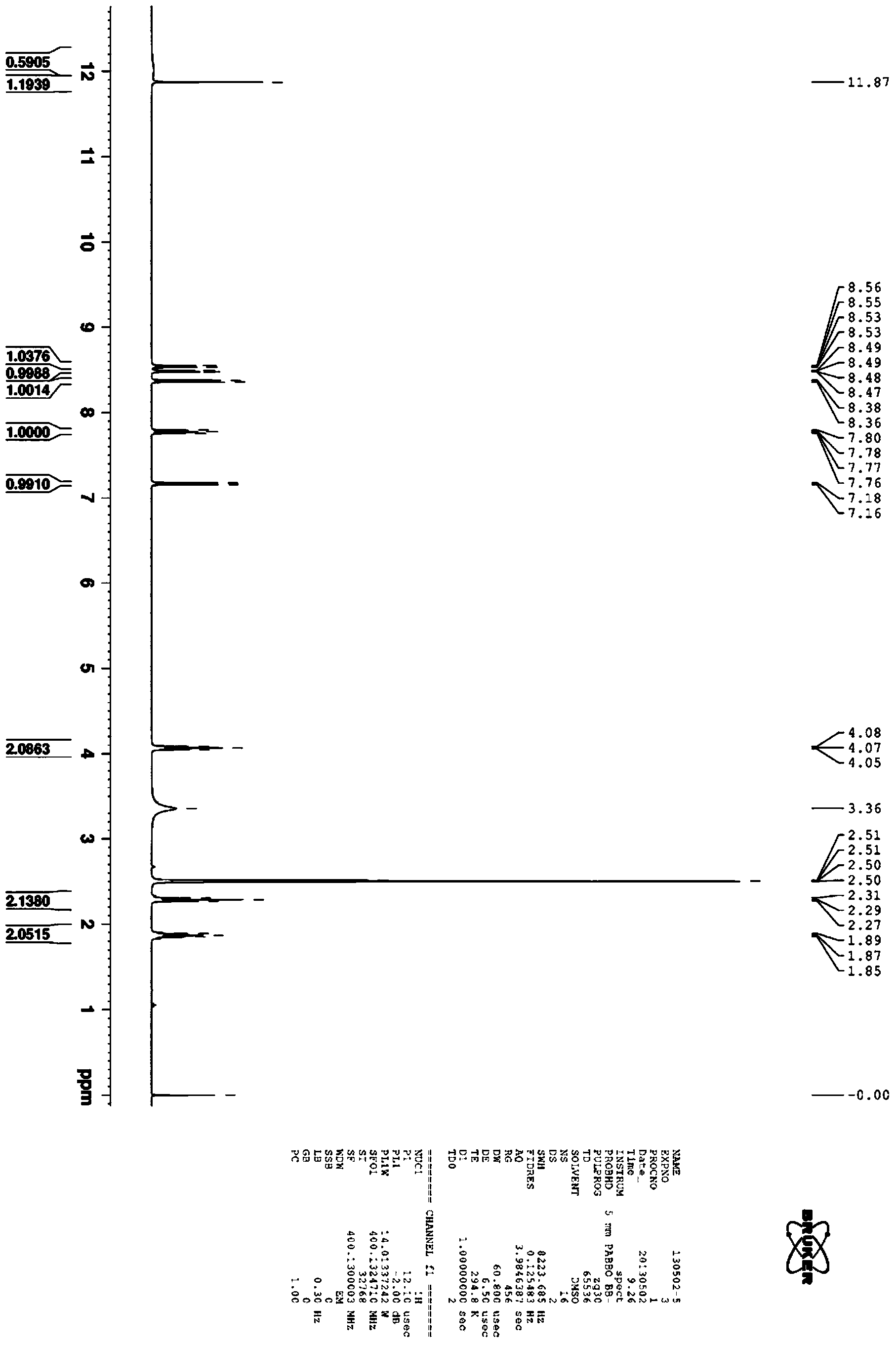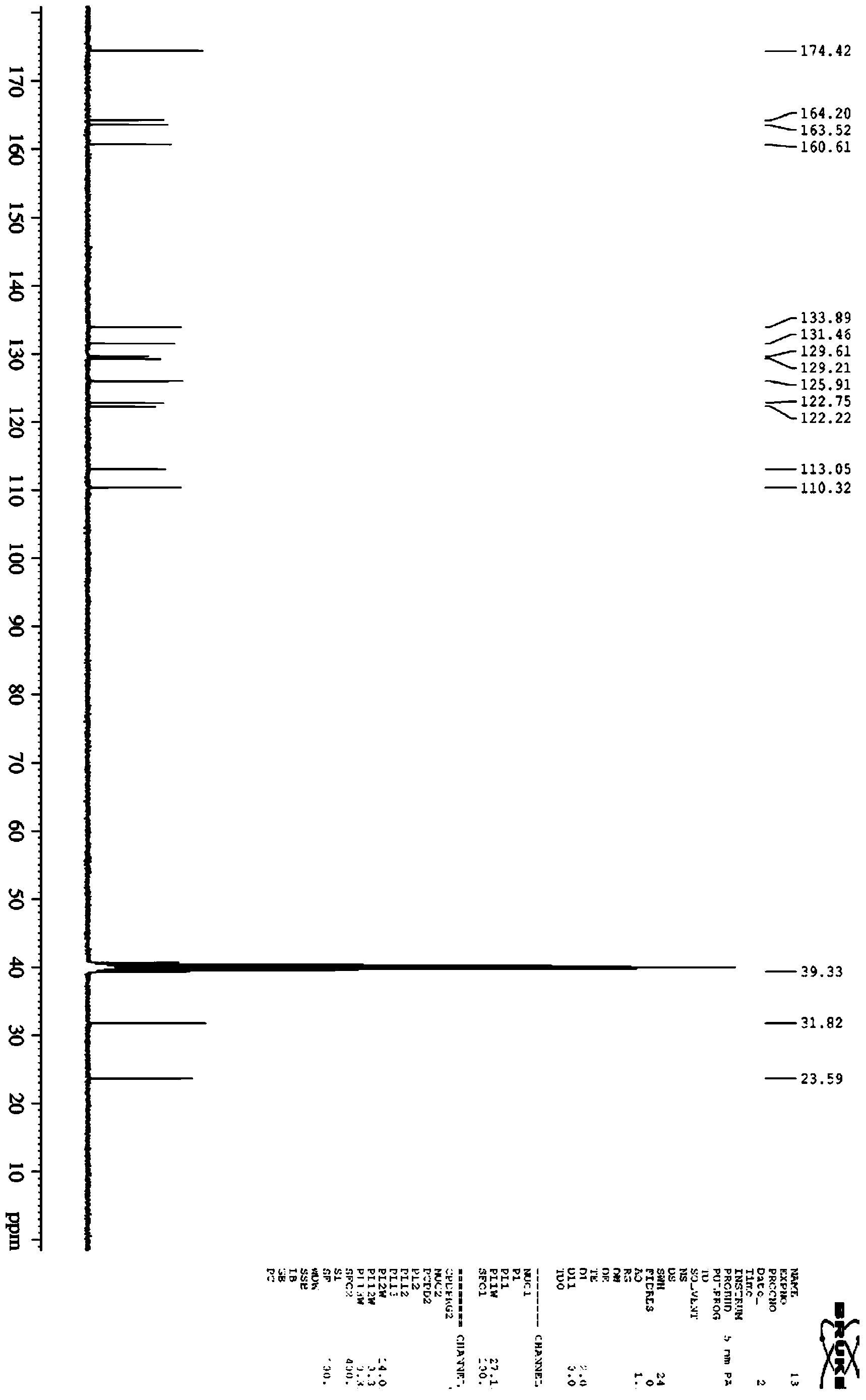Specific fluorescent probe for UDP-glucuronosyltransferase UGT1A1 and application thereof
A glucuronic acid and fluorescent probe technology is applied in the field of specific fluorescent probe substrates for glucuronyltransferase UGT1A1, which can solve the problems of low detection sensitivity, low single-enzyme selectivity, poor chemical stability, etc. The effect of high sensitivity, simple synthesis process and low detection cost
- Summary
- Abstract
- Description
- Claims
- Application Information
AI Technical Summary
Problems solved by technology
Method used
Image
Examples
Embodiment 1
[0035] The synthetic route of embodiment 1.N-(3-carboxyalkyl)-4-hydroxyl-1,8-naphthalimide
[0036] (1) Synthesis of compound 1
[0037] Add 4.2mmol of 4-aminobutyric acid to 50ml of ethanol solution containing 1g (3.61mmol) of 4-bromo-1,8 naphthalene anhydride, react overnight at 70-80°C, add 200ml of water, precipitate a large amount of solid, filter and dry in vacuo N-(3-carboxypropyl)-4-bromo-1,8-naphthalimide was obtained as a beige solid with a yield of 80-90%.
[0038] (2) Synthesis of compound 2
[0039] Put 800mg of compound 1 and 2.54g of potassium carbonate in a 100ml single-necked bottle, add 30ml of methanol, react at 60-70°C overnight, cool, adjust the pH to acidic with 1M hydrochloric acid, a large amount of yellow solid precipitates, filter, wash with a large amount of water, Vacuum drying gave yellow solid N-(3-carboxypropyl)-4-methoxy-1,8-naphthalimide with a yield of 80-90%.
[0040] (3) Synthesis of compound 3
[0041] Put 300mg of compound 2 in a 25ml ...
Embodiment 2
[0044] Embodiment 2. In vitro determination of the selectivity of human recombinant UGT single enzyme
[0045] (1) Prepare 95μl UGT metabolic reaction system in advance, including Tris-Hcl buffer (50mM) at pH 7.4, each single enzyme of recombinant human UGT (0.06mg / ml), N-(3-carboxypropyl)-4- The final concentration of hydroxy-1,8-naphthoimide is 10 μM, and it is shaken and pre-incubated at 37°C for 3 minutes;
[0046] (2) Add 5 μl of UDPGA with a concentration of 40 mM (final concentration 2 mM) to the reaction system to initiate the reaction;
[0047] (3) After 30 minutes, add 100 μl of glacial acetonitrile, shake vigorously, and terminate the reaction;
[0048] (4) Use a high-speed refrigerated centrifuge at 4°C, 20,000×g, after high-speed centrifugation for 20 minutes, take the supernatant, and perform fluorescence detection (Ex=362nm, Em=450nm); the selectivity of recombinant human UGT1A1 enzyme is the highest It is about 25 times that of other single enzymes ( Figure...
Embodiment 3
[0049] Example 3. Determination of IC of human liver microsomes and UGT1A1 by in vitro inhibition test 50
[0050] (1) Prepare 190 μl human liver microsomes and UGT1A1 metabolic reaction system in advance, including Tris-Hcl buffer (50mM) at pH 7.4, human liver microsomes (0.25mg / ml), UGT1A1 (0.06mg / ml), N The final concentration of -(3-carboxypropyl)-4-hydroxy-1,8-naphthalimide was 10 μM, and different concentrations of protopanaxatriol were shaken and pre-incubated at 37°C for 3 minutes;
[0051] (2) Add 10 μl of UDPGA with a concentration of 40 mM to the reaction system to initiate the reaction;
[0052] (3) After 30 minutes, add 200 μl of glacial acetonitrile and shake vigorously to terminate the reaction;
[0053] (4) Use a high-speed refrigerated centrifuge at 4°C, 20,000×g, after high-speed centrifugation for 20 minutes, take the supernatant, and perform fluorescence detection (Ex=362nm, Em=450nm); calculate its effect on human liver microsomes and IC of UGT1A1 50 T...
PUM
 Login to View More
Login to View More Abstract
Description
Claims
Application Information
 Login to View More
Login to View More - R&D
- Intellectual Property
- Life Sciences
- Materials
- Tech Scout
- Unparalleled Data Quality
- Higher Quality Content
- 60% Fewer Hallucinations
Browse by: Latest US Patents, China's latest patents, Technical Efficacy Thesaurus, Application Domain, Technology Topic, Popular Technical Reports.
© 2025 PatSnap. All rights reserved.Legal|Privacy policy|Modern Slavery Act Transparency Statement|Sitemap|About US| Contact US: help@patsnap.com



